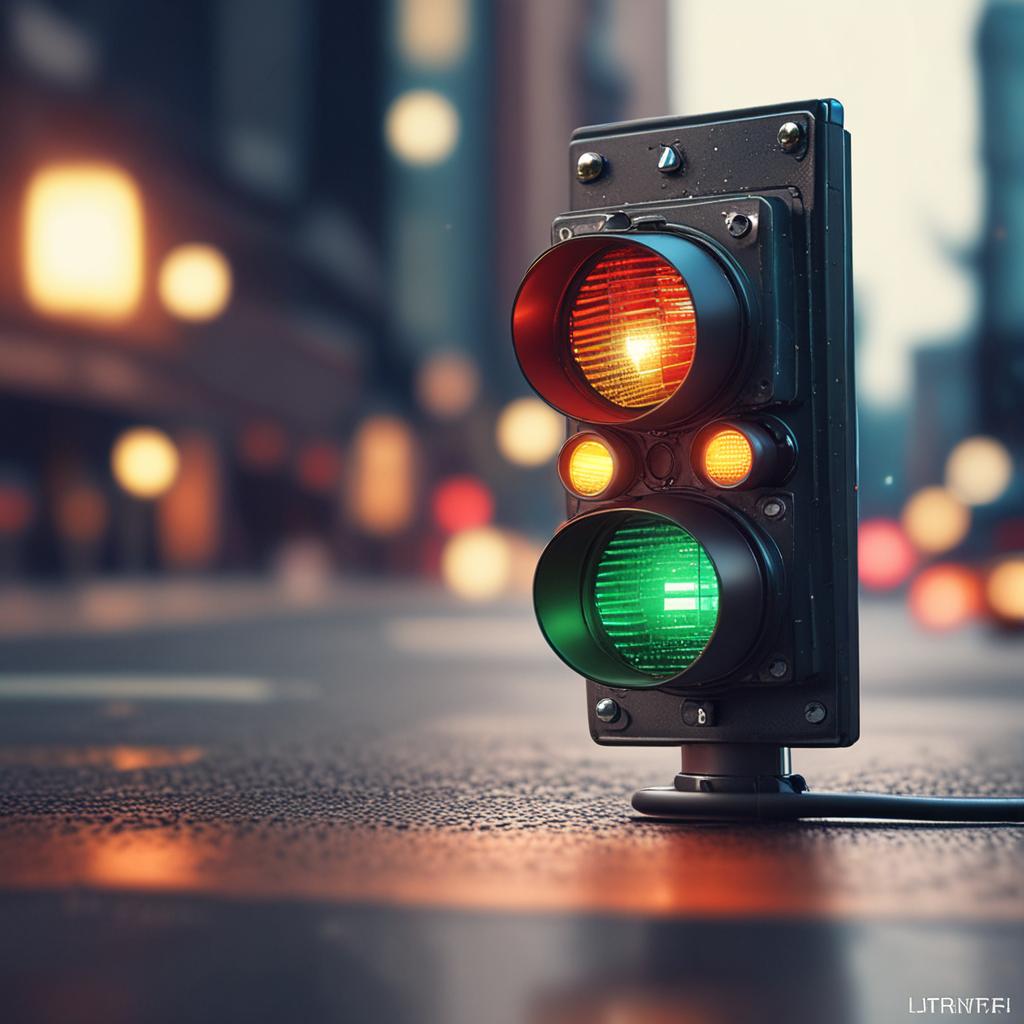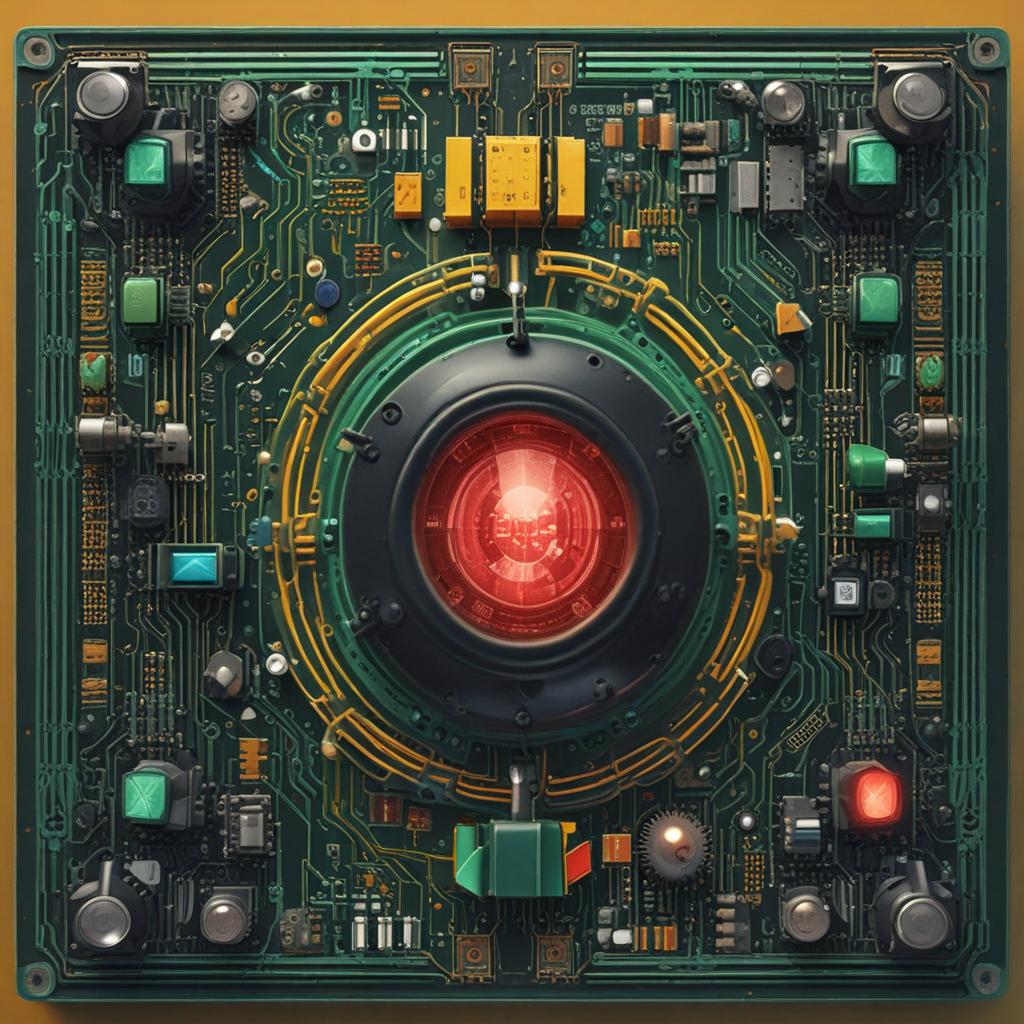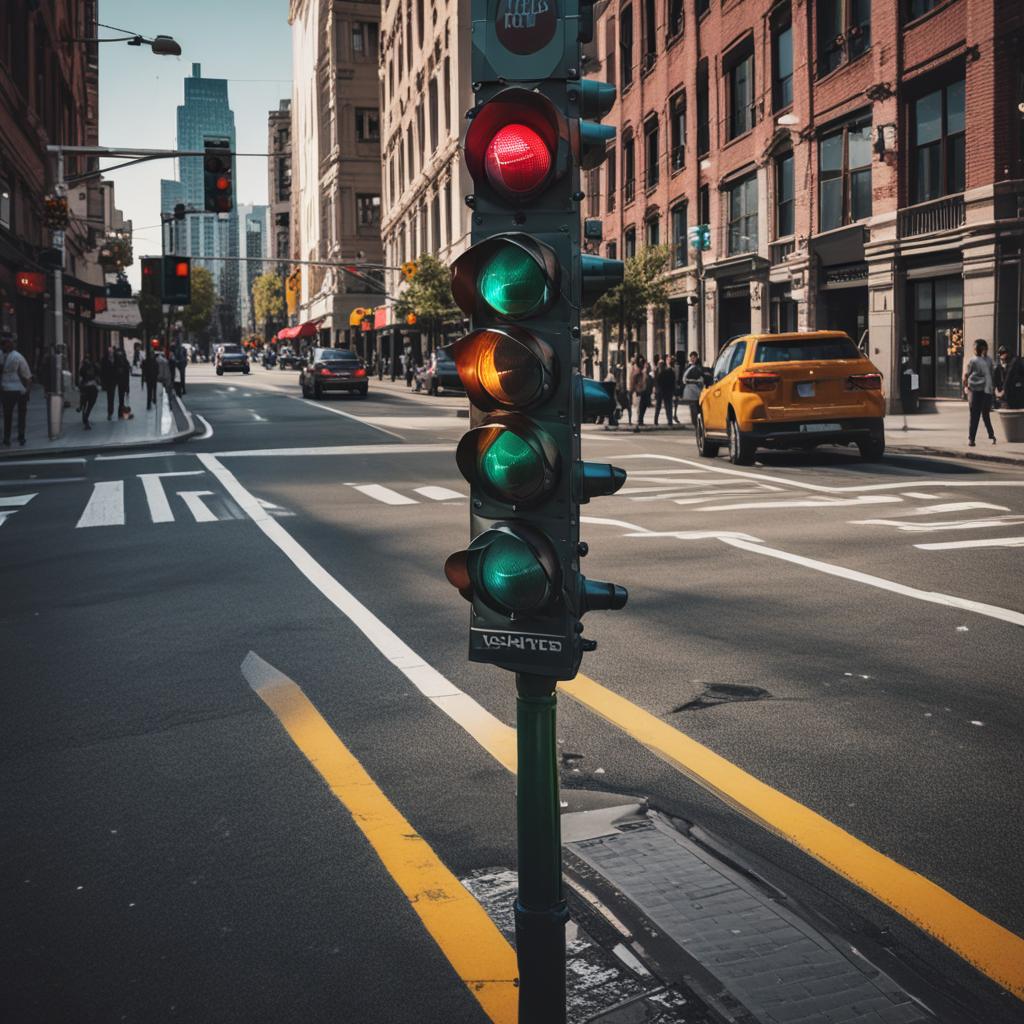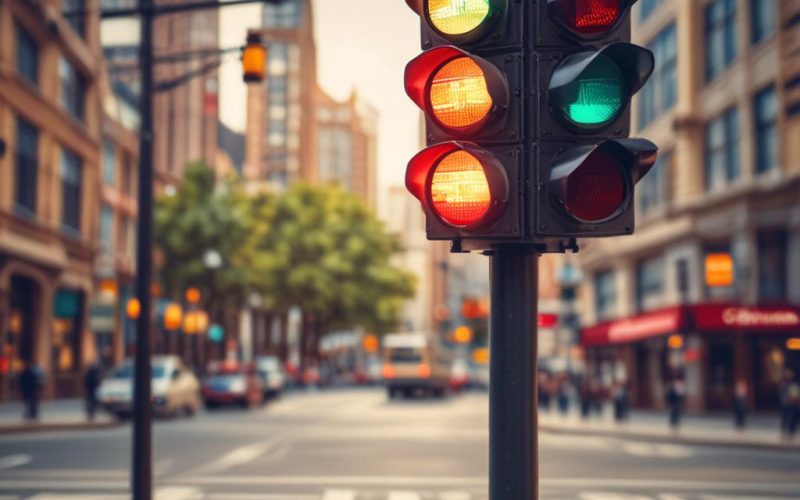Table of Contents Show
In the era of smart cities, optimizing traffic flow has become a critical challenge. Traditional traffic light systems often fail to adapt to real-time conditions, leading to congestion, increased travel times, and higher emissions. Enter AI-driven traffic light control systems, which promise to revolutionize urban mobility. By leveraging the power of cameras and Arduino, these systems can dynamically adjust traffic signals based on real-time data, significantly improving efficiency and safety. This blog delves into the intricacies of AI-driven traffic light control systems, explaining how cameras and Arduino can be integrated to create a smarter, more responsive urban infrastructure.
Step-by-Step Process
Setup Camera Module
Connect the camera module to the Arduino board and configure it.
Install AI Libraries
Load necessary AI libraries for image processing and traffic analysis.
Develop Traffic Detection
Write code to detect vehicles and pedestrians using AI algorithms.
Integrate Traffic Light Logic
Implement logic to control traffic lights based on detection data.
Test and Optimize System
Deploy the system and fine-tune performance for real-time operation.
Process infographic for Ai-driven Traffic Light Control System Using Camera + Arduino
What is an AI-Driven Traffic Light Control System?
An AI-driven traffic light control system utilizes artificial intelligence to manage traffic signals. Unlike traditional timer-based systems, AI-driven systems can analyze traffic patterns in real-time, adjusting signal timings to reduce congestion and improve flow. These systems rely on data collected from various sources, including cameras, to make informed decisions.
AI improves traditional traffic light systems by providing adaptive control. Instead of adhering to fixed schedules, AI algorithms can respond to changing conditions, such as rush hours or unexpected events, to optimize traffic flow continuously.
Benefits of AI-Driven Traffic Light Systems
AI-driven traffic light systems offer numerous advantages over traditional methods. They can significantly reduce traffic congestion, ensuring smoother and faster commutes for drivers. Enhanced safety is another key benefit, as AI can detect and respond to potential hazards more quickly than human operators.
Additionally, these systems contribute to improved fuel efficiency and reduced emissions. By minimizing idle times and reducing the need for abrupt stops and starts, AI-driven traffic lights help lower the environmental impact of vehicles. Pedestrians also benefit from safer crossings and more predictable signal changes.
Role of Cameras in Traffic Management
Types of Cameras Used in Traffic Management
Several types of cameras are employed in traffic management systems. Surveillance cameras provide a broad view of intersections, helping to monitor overall traffic flow. License plate recognition cameras are used to identify vehicles and track their movements, aiding in enforcement and data collection. AI-powered cameras, equipped with advanced sensors and processors, can analyze traffic in real-time, detecting anomalies and providing detailed data for AI algorithms.
Functions of Cameras in Traffic Light Control
Cameras play a crucial role in real-time monitoring of traffic flow. They can detect the number of vehicles at intersections, their speeds, and directions, providing valuable data for AI algorithms. Cameras also aid in detecting traffic violations, such as running red lights or speeding, helping to enforce traffic laws and improve safety. Additionally, they collect traffic data for long-term analysis, enabling city planners to make informed decisions about infrastructure improvements.
Arduino in Traffic Light Control Systems
What is Arduino?
Arduino is an open-source electronics platform based on easy-to-use hardware and software. It consists of a physical programmable circuit board (microcontroller) and a development environment for writing software for the board. Arduino is widely used in various applications, from prototyping to educational projects, due to its flexibility and simplicity.
Arduino Components for Traffic Light Control
In traffic light control systems, Arduino can be used to interface with various sensors and actuators. Key components include microcontrollers, which process data and control outputs, and sensors, which collect information from the environment. Connectivity options such as Wi-Fi or Bluetooth modules can be integrated to enable remote monitoring and control.
Programming Arduino for Traffic Light Control
The basic principles of Arduino programming involve writing code in the Arduino Integrated Development Environment (IDE) and uploading it to the microcontroller. For traffic light control, the code typically involves reading sensor data, processing it, and adjusting signal timings accordingly. Example code might include logic for detecting vehicle presence, setting signal durations, and handling priority rules for different types of traffic.

Example code for a simple traffic light control system might look like this:
int redLight = 13;
int yellowLight = 12;
int greenLight = 11;void setup() { pinMode(redLight, OUTPUT); pinMode(yellowLight, OUTPUT); pinMode(greenLight, OUTPUT); }
void loop() {
digitalWrite(greenLight, HIGH);
delay(5000);
digitalWrite(greenLight, LOW);
digitalWrite(yellowLight, HIGH);
delay(2000);
digitalWrite(yellowLight, LOW);
digitalWrite(redLight, HIGH);
delay(5000);
digitalWrite(redLight, LOW);
}
Integration of Camera and Arduino for AI-Driven Traffic Control
Setting Up the Camera and Arduino System
To integrate a camera with an Arduino for AI-driven traffic control, several hardware components are required. These include a compatible camera module, an Arduino board, sensors for vehicle detection, and connectivity modules for data transmission. The setup involves connecting the camera to the Arduino, ensuring proper power supply, and configuring communication protocols.
Connection and setup instructions typically include wiring the camera to the Arduino’s I2C or SPI pins, ensuring stable power connections, and configuring the Arduino code to read data from the camera. Additional sensors, such as infrared or ultrasonic sensors, can be integrated to provide more accurate data.
AI Algorithms for Traffic Light Control
AI algorithms play a pivotal role in processing data from cameras and making real-time decisions. Common algorithms include machine learning models, such as neural networks, which can analyze traffic patterns and predict optimal signal timings. These algorithms can adapt to changing conditions, ensuring efficient traffic flow under various scenarios.
AI processes data from cameras by analyzing images or video feeds to detect vehicles, their movements, and interactions. This data is then used to train machine learning models, which can make predictions and adjustments to traffic signals in real-time.

Real-Time Data Processing and Decision Making
The system adapts to changing traffic conditions by continuously monitoring data from cameras and sensors. AI algorithms analyze this data to detect patterns and anomalies, adjusting signal timings accordingly. Ensuring low latency and high accuracy is crucial for the system’s effectiveness, requiring efficient data processing and communication protocols.
Implementing the AI-Driven Traffic Light Control System
Step-by-Step Implementation Guide
Implementing an AI-driven traffic light control system involves several steps. Hardware assembly includes connecting the camera, sensors, and Arduino board, ensuring all components are properly powered and communicating. Software setup involves writing and uploading code to the Arduino, configuring AI algorithms, and integrating them with the hardware.
Example steps might include:
- Connecting the camera to the Arduino’s I2C pins
- Wiring sensors for vehicle detection
- Uploading the Arduino code for signal control
- Configuring AI algorithms for data processing
Testing and Calibration
Initial testing procedures involve simulating various traffic scenarios to ensure the system responds correctly. Calibration is essential for optimal performance, adjusting sensor sensitivity and AI algorithm parameters to match real-world conditions. This process may require iterative testing and refinement to achieve the desired results.
Deployment and Maintenance
Best practices for deployment include thorough testing in controlled environments before rolling out the system citywide. Ongoing maintenance is crucial to ensure the system’s reliability, involving regular updates to AI algorithms, hardware inspections, and data analysis to identify and address issues promptly.
Case Studies and Success Stories
Real-World Applications of AI-Driven Traffic Light Systems
Several cities around the world have successfully implemented AI-driven traffic light systems. For example, Pittsburgh, USA, uses AI to optimize traffic flow, resulting in reduced congestion and improved travel times. Similarly, Helsinki, Finland, has seen significant benefits from AI-driven traffic management, including enhanced safety and lower emissions.
Key takeaways from these implementations include the importance of data collection and analysis, the need for adaptive algorithms, and the value of continuous monitoring and updates. Lessons learned highlight the challenges of integrating new technologies into existing infrastructure and the necessity of stakeholder engagement.
Impact on Traffic Flow and Safety
Quantitative improvements from AI-driven traffic light systems include reduced travel times, lower congestion levels, and fewer accidents. Qualitative improvements involve enhanced driver and pedestrian experiences, with smoother traffic flow and more predictable signal changes. These systems also contribute to environmental benefits, such as reduced emissions and fuel consumption.

Challenges and Future Directions
Current Challenges in AI-Driven Traffic Management
Technical limitations, such as sensor accuracy and data processing speed, pose challenges in AI-driven traffic management. Privacy and security concerns are also significant, as cameras and sensors collect sensitive data. Ensuring data privacy and protecting against cyber threats are critical for the successful implementation of these systems.
Future Trends and Innovations
Emerging technologies in traffic management include the use of 5G for faster data transmission, advanced AI algorithms for more accurate predictions, and the integration of IoT devices for comprehensive monitoring. Potential advancements in AI and Arduino applications involve the development of more sophisticated algorithms, improved hardware capabilities, and enhanced integration with other smart city technologies.
Conclusion
The integration of AI-driven traffic light control systems using cameras and Arduino represents a significant leap forward in urban mobility. These systems offer numerous benefits, including reduced congestion, enhanced safety, and improved environmental sustainability. By leveraging the power of AI and Arduino, cities can create smarter, more responsive traffic management solutions that adapt to real-time conditions and provide seamless experiences for drivers and pedestrians.
As technology continues to evolve, the potential for AI-driven traffic light control systems to transform urban landscapes is immense. We encourage further exploration and adoption of these innovative solutions, and urge readers to stay informed about the latest advancements in smart city technology. Together, we can build a future where traffic flow is optimized, and urban living is more efficient and enjoyable.
FAQ Section
How does AI improve traffic light control systems?
AI improves traffic light control systems by providing real-time data analysis and adaptive control. Instead of relying on fixed schedules, AI algorithms can respond to changing traffic conditions, optimizing signal timings to reduce congestion and improve flow. This results in smoother traffic, reduced travel times, and enhanced safety.
What are the key components required for an AI-driven traffic light control system?
Key components for an AI-driven traffic light control system include cameras for real-time monitoring, sensors for vehicle detection, an Arduino board for data processing and control, and AI algorithms for decision-making. Connectivity modules, such as Wi-Fi or Bluetooth, may also be required for remote monitoring and control.
Can this system be adapted for different types of intersections?
Yes, AI-driven traffic light control systems can be adapted for various types of intersections. The flexibility of AI algorithms allows for customization based on specific intersection characteristics, such as traffic volume, direction, and pedestrian activity. This scalability makes the system suitable for a wide range of urban environments.
What are the potential privacy concerns with using cameras in traffic management?
Using cameras in traffic management raises privacy concerns, as they collect sensitive data about individuals and vehicles. To mitigate these concerns, cities can implement anonymization techniques, limit data storage duration, and ensure secure data transmission. Transparent policies and stakeholder engagement are also essential for addressing privacy issues effectively.
How can cities benefit from implementing AI-driven traffic light systems?
Cities can benefit from AI-driven traffic light systems in numerous ways, including improved traffic flow, enhanced safety, and reduced emissions. These systems contribute to environmental sustainability, economic efficiency, and social well-being, making urban living more enjoyable and efficient.




